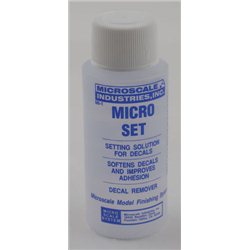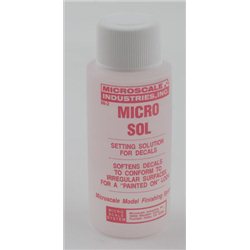Static grass puffer bottles work by manually charging model grass fibres with static electricity. When the charged...
No products
Product successfully added to your shopping cart
There are 0 items in your cart. There is 1 item in your cart.
Search Tips
How can I prevent the yellowing of my decals?
Preventing the yellowing of decals is a common concern among scale modellers. Yellowing occurs when the decals, which are typically made of a thin film with printed designs, are exposed to certain environmental factors over time. However, there are a few measures that modellers can take to minimize or prevent this yellowing.
Store decals properly: Proper storage is crucial in preserving the quality of decals. Keep them in a cool, dry place away from direct sunlight, excessive heat, and humidity. A good option is to store them in airtight containers or plastic bags, ensuring they are not exposed to any potential sources of discolouration.
Avoid exposure to UV light: Ultraviolet (UV) light is one of the main culprits behind yellowing. UV rays can be found in sunlight and even in some indoor lighting sources. To protect decals, Modellers can use UV-resistant materials such as UV-protective display cases or display cabinets with UV-blocking glass or acrylic covers. This helps to minimize the amount of UV light reaching the decals.
Apply a protective coating: Applying a clear protective coating over decals can offer an extra layer of defence against yellowing. There are various types of clear coats available, such as acrylic varnishes or clear enamel sprays. These coatings not only protect the decals from environmental factors but also provide additional durability and resistance to wear and tear.
Use decal setting solutions: Decal setting solutions, such as Micro Set and Micro Sol, can be beneficial in preventing yellowing. These solutions help the decals adhere better to the model surface, minimizing the chances of air bubbles and reducing the need for excessive handling or rubbing, which can lead to discolouration.
Avoid exposure to chemicals: Keep decals away from substances that might cause chemical reactions or accelerate yellowing. Avoid contact with solvents, strong cleaning agents, or any other potentially harmful chemicals. It's always a good idea to read the instructions and safety recommendations provided by the decal manufacturer.
By following these precautions, Modellers can significantly reduce the chances of decals yellowing and maintain the overall appearance of their scale models. Remember, taking proper care of decals will enhance the visual appeal and longevity of models for many years to come.
Click here to receive the tips weekly in your mailbox. You can unsubscribe at any time.









